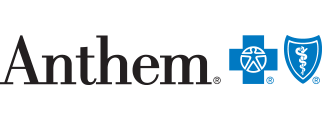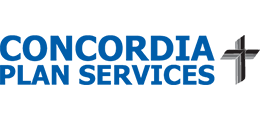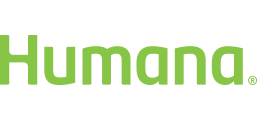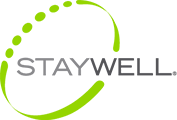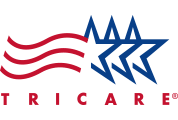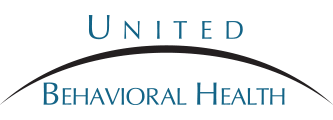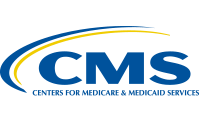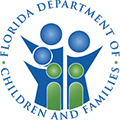What is Prescription Drug Abuse
Understanding Prescription Drug Abuse
When prescription drugs are taken for the intended duration and in the intended frequency, these medications can be safe and effective. However, when taken for non-medical reasons, these drugs can be just as dangerous and deadly as street drugs. Prescription drug abuse is the usage of a prescription medication in a way that is not intended for use by the prescribing physician. Some people abuse prescription drugs to feel good or get high, others will use them to relieve tension and stress, while still others want to experiment with the effects of the drug. The reasons for prescription drug abuse vary, but one thing remains clear; prescription drug abuse is on the rise in the United States and other developed countries.
There are three commonly misused classes of prescription drugs, opioid narcotics, CNS depressants, and stimulants. Each drug has different effects and are abused for different reasons.
Opioid narcotics: This class of drug includes oxycodone, hydrocodone, and methadone which are used to manage moderate-to-severe pain. Opioid narcotics cause feelings of calmness and overall well-being for those who take the drug non-medically.
CNS depressants: This class of drug includes benzodiazepines and barbiturates and are prescribed for those struggling with anxiety or sleep disorders. People who abuse these drugs may do so to augment the high from another drug, such as alcohol, or to feel calm and relaxed.
Stimulants: This class of drugs includes Ritalin and Adderall which are commonly prescribed to manage symptoms of narcolepsy and ADHD. People abuse stimulants in order to increase mental acuity and productivity.
Many people who abuse prescription drugs operate under the erroneous misperception that because these drugs are prescribed by a physician, they are safer than illegal drugs such as methamphetamines. However, taken in higher dosages than prescribed or in a manner other than intended, prescription drugs carry heavy, often life-threatening consequences. Fortunately, there is comprehensive treatment available for prescription drug addiction.
Statistics
Statistics of Prescription Drug Abuse
Prescription drugs are now the second-most abused class of drug in the United States, following only marijuana. In 2010, about 7 million people (or 2.7% of the population) took prescription medication for non-medical purposes. 29% of individuals over the age of 12 who first experimented with illegal drugs in the past year began by abusing prescription drugs. The number of emergency room visits linked to prescription drug misuse almost doubled between 2004 and 2009.
Causes of Prescription Drug Abuse
What are the Causes of Prescription Drug Abuse
There is not one single cause that leads to the development of prescription drug abuse; rather it is thought to be a combination of factors that work together to create an addiction. Some of the most common causes for prescription drug abuse include:
Genetic: People who have a family history of addiction are more likely than those who do not have a similar history to abuse prescription drugs.
Physical: Individuals who struggle with chronic medical health conditions may be at higher risk for developing an addiction to prescription drugs as they come to rely upon these drugs to alleviate physical discomfort. All prescription medications should be closely monitored by the prescribing physician.
Environmental: People who are born into homes in which addiction is present are at greater risk for normalizing and accepting addiction. Teens who are exposed to social environments or peer pressure in which drug use is rampant are at greater risk for prescription drug addiction. Additionally, those who believe that prescription drugs are safe, as they’re from a doctor, are at greater risk for developing an addiction to these drugs.
Risk Factors:
- Other addictions, including alcohol
- Younger age – especially between teens or early 20s
- Pre-existing psychiatric disorders
- Employment in healthcare settings
Signs and Symptoms of Prescription Drug Abuse
Learn More About the Signs and Symptoms of Prescription Drug Abuse
Many of the symptoms of prescription drug abuse are based upon the drug of abuse. Symptoms will also depend upon the individual’s genetic makeup, length of abuse, frequency of abuse, and co-occurring addictions. Most common symptoms of prescription drug abuse include:
Behavioral symptoms:
- Increase in drug-seeking behaviors
- Taking dosages higher than prescribed
- Stealing, forging, or selling prescriptions
- Poor decision-making abilities
- Impaired judgment
- Changes in sleeping and eating patterns
- Mood swings and/or hostility
- “Losing” prescriptions to acquire more prescriptions
- “Doctor-shopping” or visiting several doctors to obtain more prescriptions
- Appearing high, amped up, or sedated
Symptoms of Opioid Abuse:
- Depression
- Hypotension
- Confusion
- Sweating
- Impaired coordination
- Decreased respiration rate
- Constipation
Symptoms of Sedative Abuse:
- Lethargy and drowsiness
- Confusion
- Unsteady gait
- Poor judgment
- Nystagmus – involuntary, rapid movements of the eyeball
- Syncope and fainting
Symptoms of Stimulant Abuse:
- Agitation
- Insomnia
- Irritability
- Restlessness
- Impulsiveness
- Hypertension
- Cardiac arrhythmias
- Weight loss
Effects of Prescription Drug Abuse
Understanding the Effects of Prescription Drug Abuse
The effects of long-term abuse of prescription drugs will vary upon drug of abuse, frequency of use, additional substances abused, and length of abuse. Some of the long-term consequences of prescription drug abuse may include:
- Physical dependence
- Tolerance
- Addiction
- Worsening of emotional health
- Worsening of physical health
- Incarceration
- Abuse of street drugs
- Respiratory depression
- Cardiac arrhythmias
- Self-harming behaviors
- Heart attack
- Stroke
- Suicidal thoughts and behaviors
- Coma
- Death
Effects of Withdrawal and Overdose
Learn More About the Effects of Withdrawal and Overdose
Withdrawal is a grouping of symptoms that occur following abrupt discontinuation or decrease in intake of drugs after a person has become physically dependent upon a substance such as prescription drugs. Overdose can easily occur when prescription drugs are combined with other drugs or substances of abuse such as alcohol.
Opiate Withdrawal:
- Agitation and anxiety
- Muscle aches and bone pain
- Insomnia
- Abdominal pain, nausea, and diarrhea
- Dilated pupils
- Goosebumps and sweating
Opiate Overdose:
- Decreased level of consciousness
- Pinpoint pupils
- Bradycardia
- Decreased – or stopped – respiration rate
- Cyanosis
- Seizures
- Muscle spasms
- Inability to rouse
- Coma
- Death
CNS Depressant Withdrawal:
- Insomnia
- Irritability and agitation
- Panic attacks and increased anxiety
- Tremors and muscle spasms
- Nausea and vomiting
- Difficulty concentrating
- Rebound anxiety
- Seizures
- Psychosis
- Coma
CNS Depressant Overdose:
- Dizziness
- Diplopia and nystagmus
- Anxiety and agitation
- Confusion
- Amnesia
- Hypotonia and ataxia
- Paradoxical agitation
- Respiratory depression
- Hypotension
- Slurred speech
- Altered mental status
- Drowsiness
- Hallucinations
- Unresponsiveness
- Coma
Stimulant Withdrawal:
- Irritability
- Cravings for more stimulants
- Insomnia
- Loss of appetite
- Fatigue
- Depression
- Headaches
- Cardiac arrhythmias
- Changes in behavior or personality
Stimulant Overdose:
- Aggression
- Cardiac arrhythmias
- Dilated pupils
- Hypertension
- Hyperthermia
- Nausea, vomiting, diarrhea
- Rapid respirations
- Restlessness
- Tremor
- Seizures
- Psychosis
Co-Occurring Disorders
Treatment for Co-Occurring Disorders
People who struggle with addiction may also be struggling with undiagnosed or untreated mental health conditions. These may include the following co-occurring disorders:
- Depressive disorders
- Anxiety disorders
- Borderline personality disorder
- Antisocial personality disorder
- Alcoholism
- Behavioral addictions
- Bipolar disorder
- Schizophrenia
